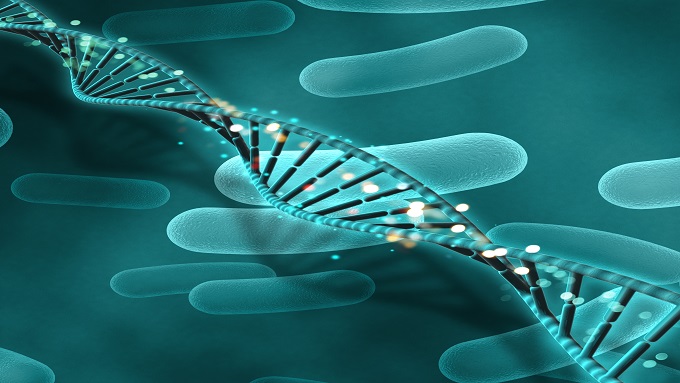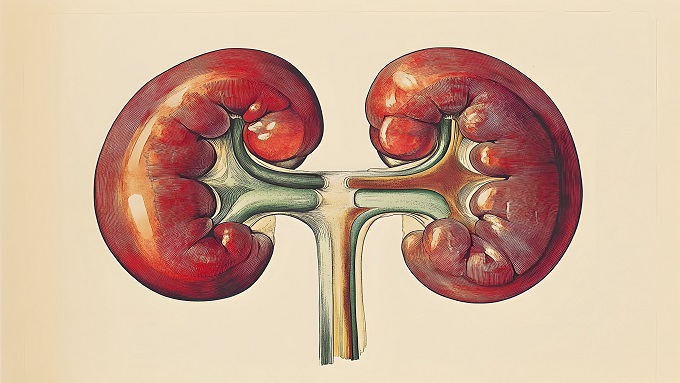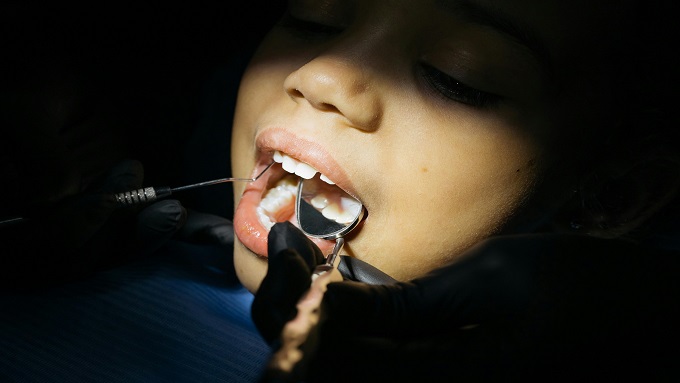Microanatomical and Biochemical Influences of Lycopene on The Renal Status in Streptozotocin-Induced Diabetic Wistar Rats

Downloads
Highlights:
1. The histoarchitecture of the kidney revealed significant derangements in the renal tissue, such as widening of the urinary space and loss or effacement of podocytes and mesangial cells, which were restored to near normal in the treated groups.
2. The biochemical parameters such as blood glucose, insulin, and antioxidant levels in this study were observed to be altered in the diabetic groups, but with administration of the intervening agent, these biochemical parameters were normalized.
3. The intervening agent was found to be a better prophylactic than curative therapy.
Abstract
Introduction: Chronic hyperglycemia is pathognomonic of diabetes mellitus; however, this is not responsible for many of the morbidities. Blood glucose is fairly readily regulated by drugs; however, this is not inhibiting the long-term complications despite euglycemic control, there is still damage in virtually every organ system. Hence, this study evaluated the beneficial effect or otherwise of lycopene on the histoarchitectural and biochemical layout of the kidney in diabetic wistar rats. Objective: To assess the histoarchitecture and biochemical parameters of the kidney of diabetic Wistar rats after intervention with lycopene as well as to determine whether lycopene is more efficacious as curative than prophylactic agent. Materials and Method: The rats were grouped into five sects (a, b, c, d, and e) of six animals per group. Group a is the normal control that was given 2ml/kg/day of citrate buffer per oral for 30 days. Group b was given 60mg /kg of streptozotocin. Group c was treated with lycopene 20mg/kg/day p.o for 30 days after diabetes induction. Group d is the group that was pretreated with lycopene 20mg/kg/day orally for 30 days. Group e was treated with Insulin 5 IU/kg for 30 days after diabetes induction. The rats were sacrificed under ketamine anaesthesia at the end of the experiment. Result: The histological outline of the kidney revealed significant widening of the urinary space in the untreated diabetic group (b) and the test groups (c and d) when compared with the normal control group (a). It was observed that the blood glucose levels in the test groups significantly reduced in value (p<0.05) below diabetic range. There was significantly higher level (p<0.05) of antioxidants in the curative than the prophylactic group, Conclusion: This study showed that lycopene conferred better ameliorative effect when used prophylactically than curatively.
Abdelmoaty, M. A., Ibrahim, M. A. Ahmed, N. S., et al. 2010. Confirmatory studies on the antioxidant and antidiabetic effect of quercetin in rats. Indian Journal of Clinical Biochemistry: IJCB, 25(2): 188–92. doi: 10.1007/s12291-010-0034-x.
Ahmed, A. M. 2002. History of diabetes mellitus. Saudi medical journal, 23(4): 373–378. Available at: http://www.ncbi.nlm.nih.gov/pubmed/11953758.
Amegashie, E., Amidu, N., Owiredu, W. 2015. A comparison of fluoride-oxalate and plain (serum gel) tube on glucose measurement. Journal of Medical and Biomedical Sciences, 4(1): 34–40. doi: 10.4314/jmbs.v4i1.5.
American Diabetes Association. 2010. Diagnosis and classification of diabetes mellitus. Diabetes care, 33 Suppl 1(Suppl 1): S62-9. doi: 10.2337/dc10-S062.
Arumugam, T. V., Shiels, I. A., Strachan, A. J., et al. 2003. A small molecule C5a receptor antagonist protects kidneys from ischemia/reperfusion injury in rats. Kidney International, 63(1): 134–142. doi: 10.1046/j.1523-1755.2003.00737.x.
Chen, L., Magliano, D. J., Zimmet, P. Z. 2012. The worldwide epidemiology of type 2 diabetes mellitus present and future perspectives. Nature Reviews Endocrinology, 8(4): 228–236. doi: 10.1038/nrendo.2011.183.
International Diabetes Federation. 2022. IDF diabetes atlas 2021, IDF. Available at: https://diabetesatlas.org/atlas/tenth-edition/.
Kanwugu, O. N., Glukhareva, T. V., Danilova, I. G., et al. 2022. Natural antioxidants in diabetes treatment and management: Prospects of astaxanthin. Critical Reviews in Food Science and Nutrition, 62(18): 5005–5028. doi: 10.1080/10408398.2021.1881434.
Leh, H. E., Lee, L. K. 2022. Lycopene: A potent antioxidant for the amelioration of type II diabetes mellitus. Molecules (Basel, Switzerland), 27(7). doi: 10.3390/molecules27072335.
Maitra, A.,Sharma, A., Brand, R. E., et al. 2018. A prospective study to establish a new-onset diabetes cohort. Pancreas, 47(10): 1244–1248. doi: 10.1097/MPA.0000000000001169.
Manjeet Institute of Critical Care DMICC. 2014. Genetic basis of type 1 diabetes, type 2 diabetes, obesity, and their complications. Available at: https://www.niddk.nih.gov/-/media/Files/Strategic-Plans/Advances-in-Diabetes/DSP2011_03_GeneticBasis_508.pdf.
Mossa, A. T. H, Swelam, E. S., Mohafrash, S. M. M. 2015. Sub-chronic exposure to fipronil induced oxidative stress, biochemical and histopathological changes in the liver and kidney of male albino rats 93(2): 775-784. doi:10.1016/j.toxrep.2015.02.009.
Noreen, S., Tufail, T., Bader Ul Ain, H., et al. 2023. Antioxidant activity and phytochemical analysis of fennel seeds and flaxseed. Food Science & Nutrition, 11(3): 1309–1317. doi: 10.1002/fsn3.3165.
Olokoba, A. B., Obateru, O. A., Olokoba, L. B. 2012. Type 2 diabetes mellitus: A review of current trends. Oman Medical Journal, 27(4): 269–73. doi: 10.5001/omj.2012.68.
Owolabi, O. O., Wong, K. L. M., Dennis, M. L., et al. 2017. Comparing the use and content of antenatal care in adolescent and older first-time mothers in 13 countries of west Africa: A cross-sectional analysis of Demographic and Health Surveys. The Lancet Child & Adolescent Health, 1(3): 203–212. doi: 10.1016/S2352-4642(17)30025-1.
Pierine, D. T., Navarro, M. E. L., Minatel, I. O., et al. 2014. Lycopene supplementation reduces TNF-α via RAGE in the kidney of obese rats. Nutrition & Diabetes, 4(11): e142–e142. doi: 10.1038/nutd.2014.39.
Pourghasem, M., Shafi, H., Babazadeh, Z. 2015. Histological changes of kidney in diabetic nephropathy. Caspian Journal of Internal Medicine, 6(3): 120–7. Available at: http://www.ncbi.nlm.nih.gov/pubmed/26644877.
Rodriguez, B. C., Astudillo, M., Tosur, M., et al. 2023. Characteristics of type 2 diabetes in female and male youth. Clinical Diabetes : A Publication of The American Diabetes Association, 41(2): 239–243. doi: 10.2337/cd22-0057.
Rodriquez, I. M., O’Sullivan, K. L. 2023. Youth-onset type 2 diabetes: Burden of complications and socioeconomic cost. Current Diabetes Reports, 23(5): 59–67. doi: 10.1007/s11892-023-01501-7.
Soltesz, G., Patterson, C., Dahlquist, G. 2007. Worldwide childhood type 1 diabetes incidence ? what can we learn from epidemiology?. Pediatric Diabetes, 8(s6): 6–14. doi: 10.1111/j.1399-5448.2007.00280.x.
World Health Organization. 2023. Breaking the silence on World Diabetes Day, hearing from people living with diabetes, WHO. Available at: https://www.who.int/news-room/feature-stories/detail/breaking-the-silence--stories-from-people-living-with-diabetes.
World Health Organization. 2024. Diabetes, WHO. Available at: https://www.who.int/news-room/fact-sheets/detail/diabetes.
Xiao, N., Wang, Z., Huang, Y., et al. 2013. Roles of polyuria and hyperglycemia in bladder dysfunction in diabetes. Journal of Urology, 189(3): 1130–1136. doi: 10.1016/j.juro.2012.08.222.
Yin, Y., Zheng, Z., Jiang, Z. 2019. Effects of lycopene on metabolism of glycolipid in type 2 diabetic rats. Biomedicine & Pharmacotherapy, 109: 2070–2077. doi: 10.1016/j.biopha.2018.07.100.
Copyright (c) 2025 Arayombo Babatunde Elijah, Solomon Bolade Arayombo

This work is licensed under a Creative Commons Attribution 4.0 International License.
1. The journal allows the author(s) to hold the copyright of the article without restrictions.
2. The journal allows the author(s) to retain publishing rights without restrictions.
3. The legal formal aspect of journal publication accessibility refers to Creative Commons Attribution 4.0 International License (CC-BY).






























